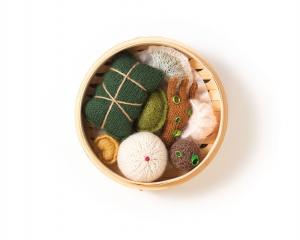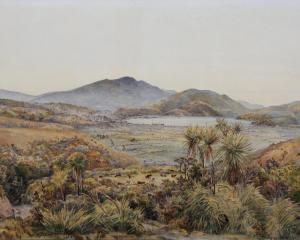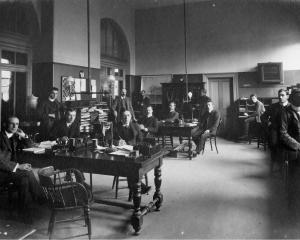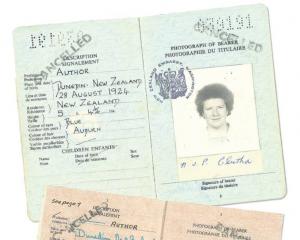Tradition and transgression are addressed equally in an exhibition of portraiture at Tūhura Otago Museum, writes Lana Arun.
Tūpuna (ancestors) were traditionally depicted through visual toi (art, knowledge) such as whakairo rākau (carvings), raranga (weaving), tukutuku (ornamental lattice work), tā moko (permanent incised skin marking), and kōwhaiwhai (painted scroll designs). These forms symbolised tūpuna, and atua (gods) and whakapapa (genealogy).

In 2020 the New Zealand Portrait Gallery Te Pūkenga Whakaata held a competition, the Kiingi Tuheitia Portraiture Award, in honoFur of the current Māori King Tuheitia Potatau Te Wherowhero VII. This competition encouraged emerging Māori artists to submit an artwork in any medium to depict their tūpuna (ancestors).
In Kiingi Tuheitia’s words ‘‘The Kiingi Tuheitia portraiture awards is about honouring our tupuna through the art, it is a living culture, forever instilled within our mokopuna. The puna or spring that mirrors their moko’’
The Kiingi Tuheitia Portraiture Award 2021 featured the works of 50 finalists in different mediums. Some artists chose to display their tūpuna in traditional mediums such as whakairo rākau, raranga, uku (clay/ceramics), crochet, and aute (tapa), which sit side by side with digital artworks, oil paintings and photography.

One of my favourite portraits in the exhibition is Suzanne Tamaki’s (Maniapoto, Tūhoe) Cultural Preservation 2021 (Shane Te Ruki). This portrait is a hand-stitched photographic print on transparent paper, with kawakawa leaves inside a pickle jar.
Suzanne Tamaki is a Te Whanganui-a-Tara (Wellington) based ringatoi (artist) and ‘‘social provocateur’’. She predominantly works with fibre creating jewellery, body adornment and costumes, and uses fashion and photography to highlight the ongoing political issues in Aotearoa. She is one of the founding members of the Pacific Sisters collective, which formed in the mid-'90s. The collective’s goal is to express Pacific stories through fashion. Her work is exhibited throughout New Zealand and overseas.
The subject of her preserved portrait in the jar is of Shane Te Ruki (Ngāti Maniapoto, Ngāti Porou) who is an orator of Ngāti Maniapoto and an iwi liaison adviser at Waipā District Council.
A glance at the history of toi moko (tattooed preserved heads) reveals that these were seen as a form of memento mori (reminder of death). They were treasured and honoured by their whānau, and great care was taken in ensuring that they were kept tidy, and anointed with oil so as to maintain their chiefly elegance (even if they were enemies). They were also important in restoring peace between warring iwi (tribes), as toi moko were returned to their respective iwi in the process. Occasionally, toi moko were displayed for mourning.
During the latter part of the 18th century, Western curiosity in the macabre led to toi moko being traded as collectors’ items. This resulted in the trade of toi moko heads for firearms and muskets during the Musket Wars of the early 19th century led by two Ngāpuhi leaders, Hongi Hika and Pōmare.
Eventually, these trades ceased domestically due to the deaths of both, Hongi Hika in 1826, and Pōmare in 1828. But overseas trades were still occurring. Most famously, Major General Horatio Gordon Robley collected toi moko, which he purchased from various dealers. The well-known photograph of him sitting in front of these toi moko, was used as an advertisement to sell them to the New Zealand Government.
However, these toi moko were instead purchased by the American Museum of Natural History as the New Zealand Government refused his offer. Finally in 2014, 35 of these toi moko were repatriated to Te Papa from the American Museum of Natural History, alongside kōimi tchakat (Moriori ancestral remains) and kōiwi tangata
(Māori ancestral remains).

This portrait mirrors the history of toi moko, starting with its journey as a revered taonga, to becoming a curiosity and trade commodity, to regaining its mana (prestige) through ongoing repatriation work. In Tamaki’s words, ‘‘The work is about death, decay and mourning the loss, and appropriation, of culture’’.
The jar has a kawakawa garland at the top, and this is generally worn by wāhine (women) during a tangihanga (funeral) process. The kawakawa leaves gathered for his exhibition of the portrait were collected from Dunedin Botanic Garden, and display an interesting cream colouring in the leaf. Tamaki elaborates with reference to them: ‘‘The narrative of the work is for the kawakawa leaves to be left in the jar to mould and decompose. It’s actually amazing that the leaves decompose and rot inside the jar, just like a body would. It adds another layer to the artwork.’’
The Kiingi Tuheitia Portraiture Award Exhibition is on display in the Tāngata Whenua gallery in Tūhura Otago Museum until January 22, 2023, and this is their only South Island display. There are 37 out of the 50 artworks on display, which have been arranged to sit alongside tūpuna of old, as well as complementing the dark and moody narrative of the gallery.
• Lana Arun (Ngāpuhi, Te Rarawa) is assistant curator Maori at Tuhura Otago Museum.













